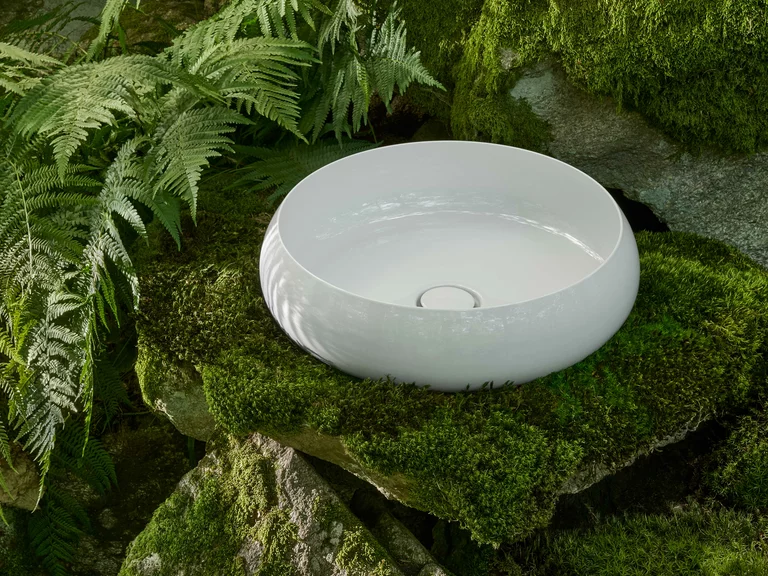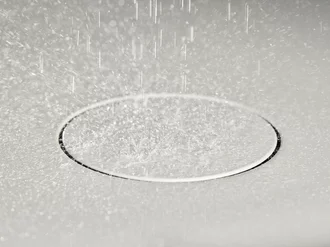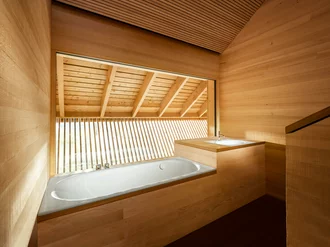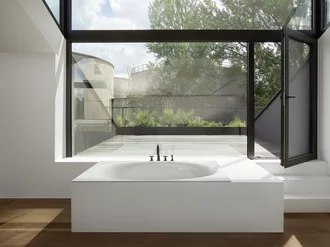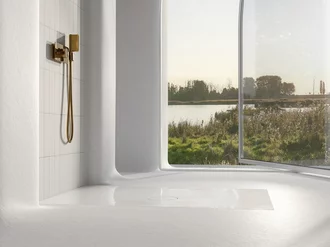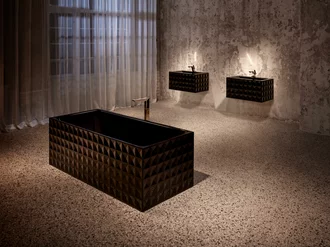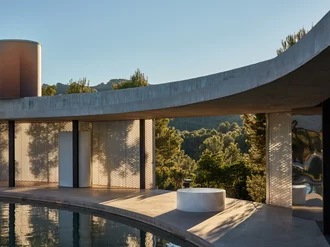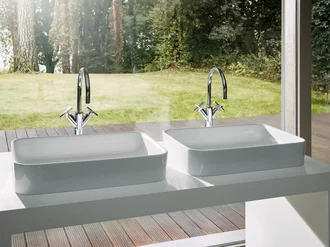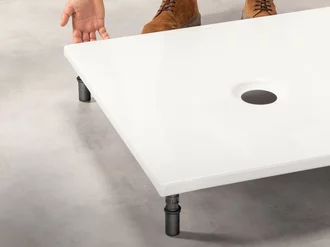

Bathing or showering
Sustainability and saving energy
Showering is often seen as cheaper than bathing, both in terms of time, energy and water consumption. However, our findings show that the decisive variable is duration. The hot water collected in the bath can be used for longer, while consumption increases continuously when showering extensively, possibly beyond the need for a bath.
Efficient showers or luxurious baths:
The decisive difference in water consumption
The crucial difference is first of all: Is it about getting clean quickly or feeling good? According to a rough estimate, using a water-saving shower with a flow rate of ten litres per minute consumes around 50 litres of hot water in five minutes.


If you spend 10 to 15 minutes in the shower or even use a large rain shower (20-30 litres/min) for short showers, you should expect to use up to 150 litres of hot water. This is the tipping point, as a bath can also be filled with this amount. However, the bather can enjoy the hot water for much longer in the bath.

Incidentally, a typical 130-litre bath heated with gas costs around one euro (55 cents for water and 40 cents for gas). If it is heated with electricity (instantaneous water heater), the costs amount to 55 cents for water and 1.54 euros for electricity, i.e. a total of two euros - based on the current average prices for energy and water.

The everyday comparison
To put it in perspective: washing dishes once costs an average of around 30 cents for water and electricity, doing laundry once costs around 46 cents. And if you have your car cleaned at a car wash, you are even prepared to pay up to 15 euros.

Efficient and soothing bathing in glazed titanium steel
When bathing, the water is not simply channelled down the drain, but collected and stored for half an hour of pleasant bathing. This time is okay for the skin, and during this time a bath made of glazed titanium steel can keep the water at 38 degrees Celsius, the feel-good temperature. Only then is it necessary to top up with hot water again.
Tips for saving water when showering

